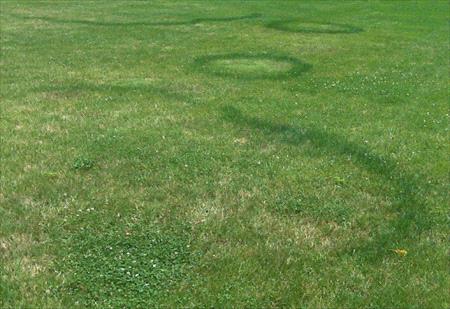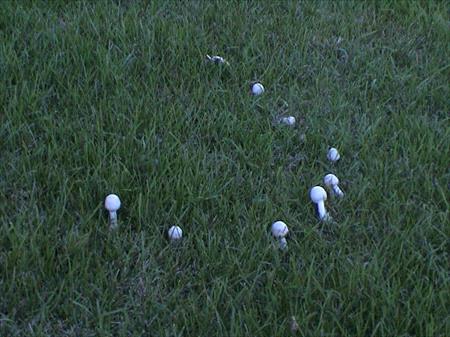Your Cart

Learn Your Lawn: Fairy Ring
Request a Quote
Fairy Ring disease is recognized in early summer by the appearance of dark green, circular bands. Most of the time, Fairy Ring is formed in a circular pattern, but it’s also common to see an unformed circle. Bands can vary in width from 10-20 cm, and rings will vary in diameter up to 50 yds. During periods of wet weather, the causal fungus gives rise to fruiting bodies, commonly known as mushrooms and toadstools, along the circumference of the rings. Fairy ring is caused by a fungus called Marasmius oreades, also known as the Fairy Ring Mushroom. The fungus is contained within the soil, as deep as 30 cm below the surface, and creates mushrooms that can range in size from a few inches to several feet in diameter. This fungus attacks at a central point and grows outward along the inner margin of the rings, where the grass becomes very weak and often dies out temporarily. In small rings, the weakened grass may occupy the entire central area. The fungus feeds on dead organic matter in the soil and can also affect the growth of the grass, causing it to be thicker or thinner than the surrounding grass. Fairy Ring can be difficult to control. In some cases, you may be able to remove the affected soil and re-seed or sod the area with a more disease resistant variety of grass. However, depending on the size of the infestation and the scope of the damage, other forms of control may be necessary. A thick, healthy, well-maintained lawn is the best line of defense. Here’s how you can adjust your beneficial cultural practices to reduce the spread of Fairy Ring disease: Avoid Watering: Under normal circumstances, you should be watering each area of your lawn for 30-45 minutes, twice per week, in the early morning so the turf is dry by nightfall. However, you should avoid watering when the disease is active, as the disease thrives with moisture. Avoid Mowing: You should avoid mowing when the disease is active. If you do have to mow, make sure your mower blade is razor sharp, so that the blade does not fray the tips of the grass, spreading the disease. Maintain a regular mowing schedule throughout the growing season. In general, you should keep your lawn between 2 ½ and 3 ½ inches high, but during the hottest weeks of summer, you may allow the grass to grow as high as 4 inches. Never remove more than ⅓ of the grass blade at each mowing. Fertilize Regularly: Regular applications of Weed Man’s specially formulated, slow-release granular fertilizer will help provide your lawn with adequate nutrients. These applications are timed specifically to avoid over fertilizing the lawn. Core Aeration: Aerating your lawn can improve soil drainage and help reduce the likelihood of lawn diseases. This will also alleviate soil compaction and allow water and nutrients to penetrate deeper into the soil. Your local Weed Man professional may be able to offer other solutions and recommend the best form of treatment that is available to improve the conditions of your lawn.WHAT IS FAIRY RING?
HOW CAN I CONTROL FAIRY RING IN MY LAWN?
 English (USA)
English (USA) Français (CANADA)
Français (CANADA)


